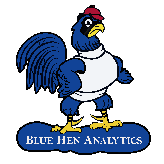
Unlike standard analysis methods, Word Clouds, also known as Tag Clouds, use visual representations to depict their findings. A Word Cloud is essentially a conglomerate of single words that are visually illustrated in different sizes and colors to reflect their significance. The process of this method begins with the analysis of a raw data source. It indexes the content and extracts the words that are most frequently found. Using an algorithm, it creates a ranking system for these words and classifies them based on how commonly they appear and how relevant they seem to be. The Word Cloud portrays its findings by grouping the single words together into the shape of what looks like a cloud. The words are visualized by way of size and color, with the most salient words in the largest font and most conspicuous color. Word Clouds focus on qualitative output rather than quantitative results.
Who uses Word Clouds?
Word Clouds are commonly used in all forms of data presentations. Inventors and Entrepreneurs use Word Clouds to demonstrate customer feedback to their product or idea when pitching a concept to investors. Within the Publishing Industry, Word Clouds help authors analyze their content and see which words may be over or under emphasized. Writers use it to ensure the effectiveness of their written communication. Web Developers run their website content through Word Clouds to ensure that key words are being utilized and that it is SEO optimized. As psychologists and sociologists often use surveys to analyze behavior, Word Clouds are useful in creating a representation of those findings to support their conclusions.
Word Clouds can identify trends and patterns in a format that could be unclear or difficult to understand if presented in a chart or table format. The frequent keywords are more easily visible in a Word Cloud since the larger text will make them stand-out in the visualization. While a Word Cloud is a visual representation of text, it will be impactful, easy to understand, and is easily shared.
